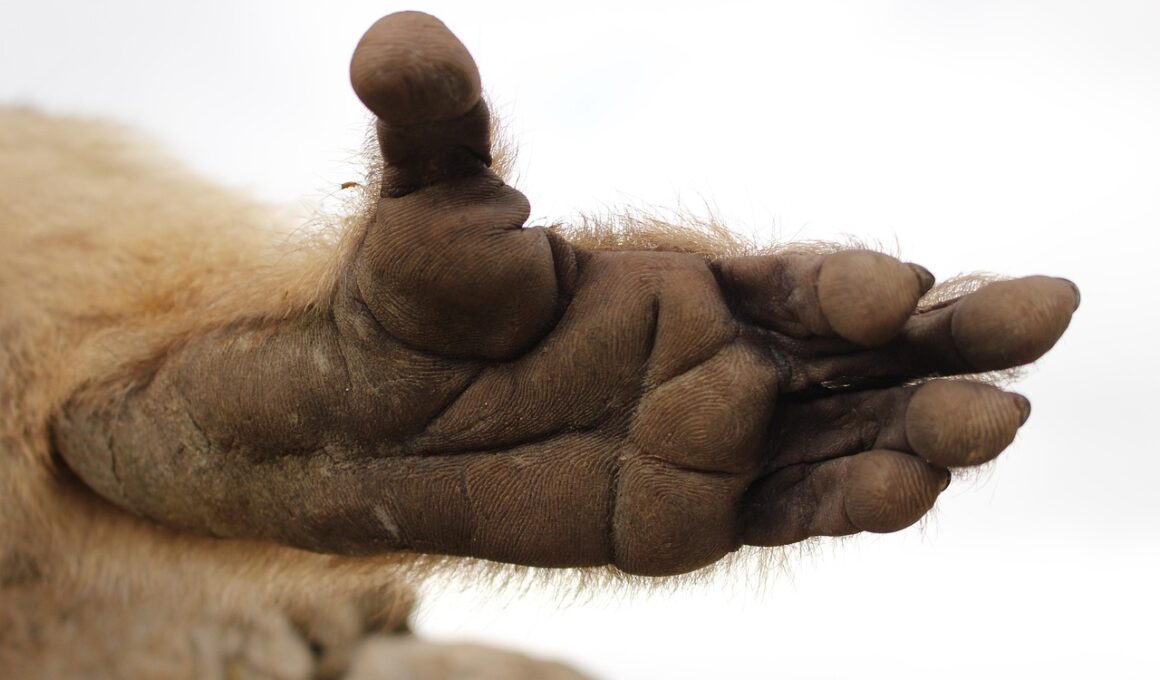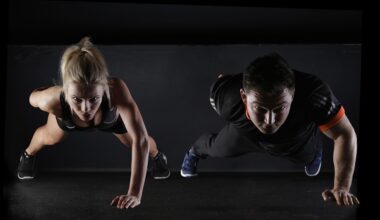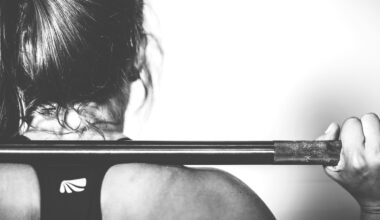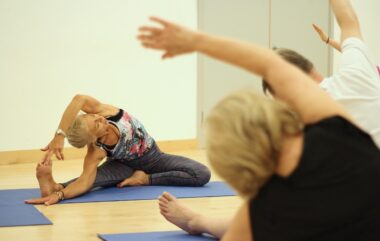Lower Limb Biomechanics: Implications for Running and Jumping
Biomechanics is a crucial aspect of understanding human movement, particularly in activities like running and jumping. These actions rely heavily on the intricate functioning of the lower limb anatomy. Among various body segments, the lower limbs are essential for generating power, creating momentum, and maintaining stability. In running and jumping, biomechanics involves analyzing forces, velocities, and movements. It encompasses evaluating aspects like joint angles, muscle strength, and body alignment. To optimize performance and prevent injuries, biomechanical analysis focuses on aspects such as stride length, cadence, and landing mechanics. Athletes, coaches, and trainers often utilize this data to refine techniques and develop training strategies. Moreover, advances in technology have enabled better analysis through wearable devices and motion capture systems. These innovations help in gaining a deeper understanding of biomechanics in sports. Therefore, the significance of proper lower limb biomechanics cannot be overstated. Maximizing efficiency during athletic activities not only enhances performance but also minimizes the risk of common injuries. Assessing biomechanics ultimately provides valuable information that can lead to improved training protocols and successful athletic outcomes.
Lower limb biomechanics entails understanding the role of various anatomical structures involved in running and jumping. Major components include muscles, tendons, ligaments, and bones. Muscles generate the necessary force for movement while tendons connect muscles to bones, facilitating transfer of that force. Ligaments play an essential role in joint stability, ensuring that movements remain coordinated and efficient. The lower limb consists of various joints, such as the ankle, knee, and hip, which work synergistically to produce optimal performance. Appropriate alignment and coordination among these joints can dramatically impact an athlete’s ability to run and jump efficiently. Effective biomechanics also influences energy expenditure and fatigue levels. Athletes who can fine-tune their biomechanics can improve their overall performance substantially. Understanding factors such as biomechanical efficiency, ground reaction forces, and velocity during these activities remains critical. Therefore, sport-specific training programs that emphasize these essential elements are crucial. Ensuring that athletes have an optimal range of motion and strength in their lower limbs further enhances their ability to perform at their peak. Regular assessments and adaptations of training routines based on biomechanical principles can promote longevity and success in sports.
The Role of Ground Reaction Forces
Ground reaction forces (GRFs) play a pivotal role in the biomechanics of running and jumping. When an athlete exerts force against the ground, an equal and opposite force is generated by the ground, crucial for propulsion. During running, GRFs may vary depending on speed, stride length, and surface conditions. Understanding these forces assists in optimizing techniques, which is vital for performance. In jumping, the magnitude of GRFs directly relates to the height and distance achieved. If an athlete mismanages these forces, it can lead to inefficiencies and an increased risk of injury. Analyzing GRFs involves using sophisticated tools such as force platforms and accelerometers that measure the forces acting on the body. Optimal force application ensures effective power transfer from the ground, which is essential for successful athletic performance. Training strategies should emphasize developing explosive strength to improve GRF utilization. Additionally, enhancing proprioception helps athletes respond to ground conditions and adjust their movements. Therefore, a solid grasp of GRF principles ultimately leads to more effective training regimens and improved competitive performance.
Incorporating plyometric training into athletes’ routines has significant implications for enhancing lower limb biomechanics. Plyometrics involve quick, powerful movements that stimulate muscle and force generation. These exercises improve both strength and speed and contribute to better coordination and agility. In running and jumping, plyometric exercises train the stretch-shortening cycle, which enables muscles to absorb and release energy efficiently. This results in improved performance and reduces the risk of injury by enhancing muscular strength and joint stability. Typical plyometric exercises include box jumps, bounding, and depth jumps, all of which specifically target lower limb adaptations. Athletes who engage in regular plyometric training will likely see improvements in their reactive strength and power output. However, proper technique is crucial during plyometric activities to prevent overstressing joints and associated tissues. Gradual progression in intensity and volume is key to allowing the body to adapt safely. Overall, integrating plyometric training can provide substantial benefits to athletes involved in jumping and running sports. Optimizing power production capacity through these dynamic movements is paramount for achieving athletic success.
Injury Prevention Strategies
Injury prevention is a critical concern in sports, particularly for athletes who rely heavily on their lower limbs for running and jumping. Common injuries include strains, sprains, and stress fractures, often attributed to biomechanical inefficiencies and overuse. Implementing effective injury prevention strategies involves a comprehensive approach focusing on strength, flexibility, and technique. Strength training enhances the muscular capacity of the lower limbs, while flexibility exercises improve joint range of motion, reducing the risk of injury. Additionally, proper biomechanics, including landing and take-off techniques, are vital for minimizing injury risk. Educating athletes on body awareness and movement patterns can aid in recognizing harmful techniques or postures that contribute to injury. Regular screenings and assessments of an athlete’s biomechanics are crucial to identify any potential issues early. Once identified, personalized interventions, such as corrective exercises or physical therapy, can address these concerns. Consistent monitoring and adaptation of training practices can foster a proactive approach to injury prevention. Thus, prioritizing these injury prevention strategies enables athletes to maintain peak performance while minimizing the risk of lower limb injuries.
Furthermore, the impact of footwear on lower limb biomechanics should not be underestimated. Selecting appropriate footwear plays a significant role in running and jumping performance. Different shoes are designed to provide varying levels of support, cushioning, and traction, tailored to specific sports and activities. Running shoes, for example, are designed to accommodate the biomechanics of runners, providing the necessary support and cushioning for impact absorption. Likewise, jumping shoes are engineered to enhance performance by offering features like lightweight materials and optimal grip. Understanding how footwear influences biomechanics aids athletes in making informed choices. Improper footwear can lead to biomechanical issues, such as altered ground contact times and inefficient force application. Therefore, regular evaluation of shoe options is essential for maximizing performance. Athletes should consult with professionals familiar with both footwear technology and biomechanics to select shoes that align with their unique biomechanics. Consequently, utilizing the right footwear enhances comfort, supports biomechanics, and subsequently improves performance in running and jumping activities.
Future Directions in Biomechanics
The field of biomechanics continues to evolve, driven by advancements in technology and research methods. Future directions will likely include enhanced methods for analyzing lower limb biomechanics, including real-time motion capture and analysis. These innovations will enable athletes and coaches to gain immediate feedback on performance, facilitating quicker adjustments for optimal technique. Artificial intelligence and machine learning are also emerging tools within biomechanics, analyzing vast datasets to identify patterns that may not be immediately obvious. This can lead to tailored training programs that enhance performance while addressing individual biomechanical weaknesses. Moreover, interdisciplinary collaboration between biomechanics, coaching, physical therapy, and sports science will enrich our understanding of lower limb mechanics. Integrating knowledge from various fields promises to create comprehensive training strategies for athletes. Future research should also address long-term effects of training on biomechanics and injury rates. Continued exploration of injury mechanisms will further enhance preventative strategies. Overall, these future trajectories hold great promise for advancing athletic performance and improving our understanding of lower limb biomechanics.
In conclusion, lower limb biomechanics is a vital area of study within exercise physiology, especially concerning running and jumping. Understanding the mechanical principles underlying these activities can significantly impact athletic performance and health. By focusing on elements like ground reaction forces, plyometric training, injury prevention strategies, and the role of footwear, athletes can enhance their abilities while minimizing risks. The ongoing research and technological advancements in this area promise to foster more effective training protocols and recovery strategies. Overall, optimizing lower limb biomechanics creates opportunities for athletes to excel, paving the way for success and longevity in their respective sports. Emphasizing a comprehensive approach to biomechanics can lead to more effective practices in training regimens. Therefore, engaging in continual assessment and adaptation of techniques ensures athletes remain at the forefront of their performance. Educating both athletes and trainers about biomechanics can promote a deeper understanding of the body’s mechanics during these critical activities. Ultimately, prioritizing biomechanics not only enhances individual performance but also contributes to a safer sporting environment across various disciplines.





